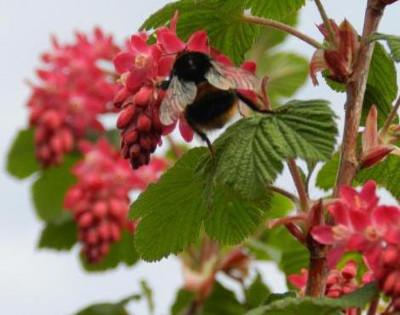 There are nearly 1 million different species of insect known on Earth with many more thought to exist unidentified deep in a variety of different habitats. Insects provide vital food for animals such as birds, reptiles and small mammals along with being pollinators of flowering plants that give us fruits, vegetables, seeds, nuts and grains.
There are nearly 1 million different species of insect known on Earth with many more thought to exist unidentified deep in a variety of different habitats. Insects provide vital food for animals such as birds, reptiles and small mammals along with being pollinators of flowering plants that give us fruits, vegetables, seeds, nuts and grains.Insects really are the backbone for life on Earth as we know it, however in recent years we have seen a drastic decline in population numbers all over the world due to habitat loss and climate change, along with being killed off in vast numbers by chemical pesticides that our crops are often sprayed with.
With more than 20,000 different species of insect found in the UK alone we are able to help them locally, not just by buying organic produce that does not permit the use of harmful pesticides in its production, but also by enticing them to our open areas including parks, nature reserves and even the back garden. Good maintenance of these areas will also ensure that you are not only attracting these important little creatures but will also provide them with a place to breed and thrive.
In your own garden for example, there are many things that can be easily (and cheaply) done in order to make it a haven for insects. By introducing a wide variety of flowering plants will provide food for insects that they will in turn pollinate, providing you not just with an insect friendly patch but a very beautiful one too. If you are unsure about what the best plants or seeds to purchase are many garden centres now stock bee and butterfly attracting seed mixes, where staff are often very helpful should you have any questions.
Along with providing them with adequate sources of food, the habitat itself must be suitable for them so try to make sure that there are also places for insects to breed. A small hollow log placed close to flowers will provide somewhere for bees (as well as woodlice and centipedes underneath) and your rose bushes will be perfect for hungry ladybirds that keep your beautiful blooms safe from being munched on by greenfly. Leaving a small patch of the garden wild and un-weeded is also important, particularly ensuring there is a small patch of nettles where butterflies lay their eggs.

